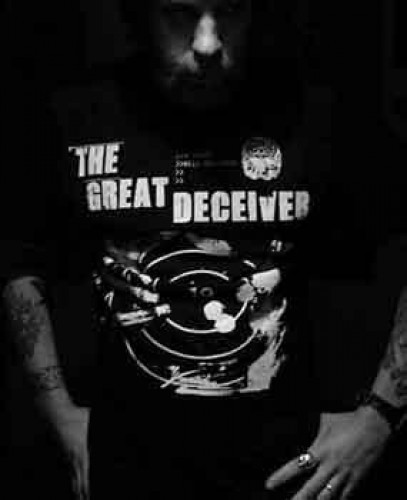
Our UK contributor Andy Synn returns with another edition of The Synn Report.
Hello everyone. For those of you who enjoyed my last column, I’m back again with another band recommended and dissected – this time it’s the turn of THE GREAT DECEIVER.
The band have been active since the late 1990’s and feature in their ranks two particularly famous men from the Swedish metal scene. Whilst you may well recognise the name Tomas Lindberg (vocals) quite easily, you may not be aware that guitarist Kristian Wåhlin is also known by the name “Necrolord” and has famously produced cover art for many of metal’s elite, from Dissection, At The Gates and Emperor, to newer bands such as The Black Dahlia Murder and Becoming The Archetype.
With a musical foundation in both the Swedish hardcore and melodic death metal scenes, coupled with an intense fascination for the moody post-punk atmospheres of Joy Division (of whom vocalist Tomas Lindberg has claimed to be an avowed fan), the sound of The Great Deceiver is difficult to precisely pigeon-hole.
Whilst the guitars have a distinctly metal edge to them, the song structures and tempos lend themselves more towards the hardcore-leaning listener, albeit coupled with a distinctly odd use of twisted melody. The use of heavy tremolo-pedal distortion on the guitar leads and ringing chords is perhaps the most distinctive and consistent motif throughout the band’s work, on a par with the distinctive vocal delivery of Mr Tomas Lindberg himself. (more after the jump, including sample tracks from the band’s discography)
Jet Black Art (EP) – 2000
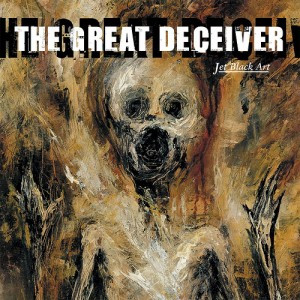 The Jet Black Art EP (released on Trustkill Records as a re-packaging of the original Cave In EP) begins in a rather abrupt fashion, “Cornered Rat” kicking in with a snarled Tomas Lindberg vocal line, a tom-heavy beat and a stuttering guitar chord. The fuzzy bass gives the track some real heft, despite its limited production values, and the guitar tone is particularly dirty. The squalling mini-solo at 1:38 kicks the song into higher gear, before its sudden end before the 3 minute mark hits.
The Jet Black Art EP (released on Trustkill Records as a re-packaging of the original Cave In EP) begins in a rather abrupt fashion, “Cornered Rat” kicking in with a snarled Tomas Lindberg vocal line, a tom-heavy beat and a stuttering guitar chord. The fuzzy bass gives the track some real heft, despite its limited production values, and the guitar tone is particularly dirty. The squalling mini-solo at 1:38 kicks the song into higher gear, before its sudden end before the 3 minute mark hits.
The title track rumbles along with a bass-heavy sound and a painfully distorted (but purposefully so) vocal performance, while follow-up “Suffering Redefined” ups the ante in terms of its discordant, distorted delivery and raging fury. The band make good use of their distinctive guitar effects and tight song-structures throughout the EP; none of the songs makes it up to the 4 minute mark, two of them not even breaking 3 minutes in length. The placing of bass high in the mix (particularly on “The End Made Flesh And Blood”) helps give each song a coherent sense of groove without softening any of the sharp and at times off-putting edges to the material. A good beginning with major promise.
A Venom Well Designed – 2002
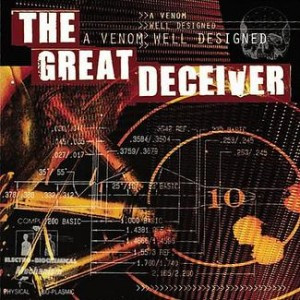 On their first full-length album the band produce a carefully distilled concoction of lyrical bile and darkly melodic harmonies. Primarily mid-paced, the album relies upon a steady and purposeful stomp to retain its heavy edge as the guitars interweave shimmering chords and delay-heavy lead parts over the meaty riffs. The overall sound is gritty, the melodies are moody and the atmosphere brooding, resonating with a sense of urban depression and modern disaffection.
On their first full-length album the band produce a carefully distilled concoction of lyrical bile and darkly melodic harmonies. Primarily mid-paced, the album relies upon a steady and purposeful stomp to retain its heavy edge as the guitars interweave shimmering chords and delay-heavy lead parts over the meaty riffs. The overall sound is gritty, the melodies are moody and the atmosphere brooding, resonating with a sense of urban depression and modern disaffection.
The first couple of tracks, “Pierced” and “The Living End”, immediately offer the first indications that the band’s sound is going to be far removed from what one might expect. Mixing chunky riffs with hardcore drum-beats (heavy on the snare, light on the double kick) there is a distinct absence of the ubiquitous chug and gallop one might expect from the melo-death crowd. In the former, the stripped down, bass-led sound is augmented by eerie lead parts and (in the later stages) moments of distorted, semi-clean singing, adding to the almost doom-y sense of melancholy. The latter plies the use of tremolo-pedal heavily, crafting a cold and echoing melodic refrain which serves to tie the song together.
More aggressive fare can be found in the middle of the record. “After Us The Flood” picks up the speed somewhat, the riffs alternating between a hardcore-friendly stomp and more up-beat, thrash-paced rhythms, whilst T. Lindberg spits forth his venom at a high rate of delivery without ever obscuring the clarity of his misanthropic invective. “Enter The Martyrs” is overall a slower, groovier affair, still managing to maintain the established levels of aggression as well as incorporating the distinctive lead work that the band has already demonstrated.
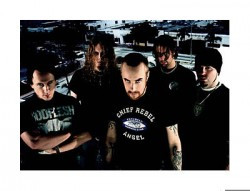 Both “Strychnine” and “The Blade” incorporate a lot more dark melody, along with the occasional use of distorted semi-clean vocal passages, conjuring a bleak and dirty sense of atmosphere. “The Blade” is particularly minimalist, hanging its approach primarily on bass-led melody in the verses and bleakly melodic, almost lullaby-esque vocals in the chorus section. Regardless of this, however, neither song sacrifices its metal/hardcore credentials in any way by thinking slightly outside of the box in this manner, as the drum work remains impeccably tasteful, the riffs suitably crunchy and the harsh vocals impressively nasty.
Both “Strychnine” and “The Blade” incorporate a lot more dark melody, along with the occasional use of distorted semi-clean vocal passages, conjuring a bleak and dirty sense of atmosphere. “The Blade” is particularly minimalist, hanging its approach primarily on bass-led melody in the verses and bleakly melodic, almost lullaby-esque vocals in the chorus section. Regardless of this, however, neither song sacrifices its metal/hardcore credentials in any way by thinking slightly outside of the box in this manner, as the drum work remains impeccably tasteful, the riffs suitably crunchy and the harsh vocals impressively nasty.
Throughout the album the lyrics remain an all-important piece of the overall puzzle, focussed upon the deficiencies and corruption inherent in the modern way of life and the flaws and failures this engenders in the modern man. Familiar themes of deception and betrayal are filtered through a distinctly despondent world-view; the traditional hardcore tropes of vengeance and weakness are addressed without any promise of hope or improvement and without ever resorting to the clichéd positivity espoused by so many. This is a dark, dark band.
Terra Incognito – 2004
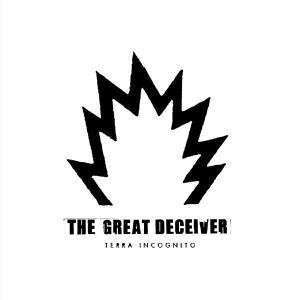 With their second album, The Great Deceiver have benefitted from a larger production sound, expanding the sonic breadth of their material without weakening the attack. Increased layering of guitar lines and effects has added depth whilst maintaining the heaviness of the riffs and the punk-like drum beats.
With their second album, The Great Deceiver have benefitted from a larger production sound, expanding the sonic breadth of their material without weakening the attack. Increased layering of guitar lines and effects has added depth whilst maintaining the heaviness of the riffs and the punk-like drum beats.
The sense of darkness is perhaps even more prominent than on the band’s debut, aided by the increased clarity of both the eerie guitar lines and the vocals of Tomas Lindberg; in particular the vocals have deepened and roughened slightly, taking on more of a growling manner to them. There is an increased use of the semi-clean tones found sparingly on “A Venom Well Designed”, however their use is particularly effective and never overbearing and serves each song well. There are no pop vocals here, don’t worry, just moody and well designed moments of melodic misanthropy.
Opener “Today” begins with a sharp and sparky drum beat, onto which is layered some stop-start riffing and some echoing lead guitar. The song immediately demonstrates the altered vocal approach of Mr T. Lindberg, incorporating some semi-whispered cleans as contrast to his growled vocals. “We – The Dead” is an intensely catchy song, based around an almost Industrial-style riff in the intro, which descends into a prowling bass-line and shimmering guitar, before exploding again into action – really demonstrating the improved clarity that has been granted to the lurching guitar riffs.
I wouldn’t say that this album is a major departure from the sound established by The Great Deceiver on their debut. However, there are certain moments of particular improvement and certain new ideas which I feel deserve to be called to your attention.
Single “Lake Of Sulphur”, for example, continues the semi-industrial overtones with a synth-led intro and an almost bouncy main riff, leading into a strange spoken-word style verse which is at odds with the omnipresent rage presented elsewhere. The heavy bass-fuzz of “Marathon Man” and “Forward – Willing – Sickness” recall the band’s debut EP, albeit with far better production, with the former also incorporating some particularly odd distortion effects on the layered singing/screaming which comprises the verse sections. The latter distinguishes itself with the forthright drum-work and the increasingly doom-y and dirge-like atmospherics conjured up by the subtle guitar lines. It’s definitely the darkest song on the record.
 The beginning of “The Heel On The Throat Of The Young” incorporates elements of electro-rock to provide an initially smoother ride than we have grown used to – however, in the overall context of the album this is a welcome change. Although it is perhaps the softest song, with the most obvious focus on texturing and restraint, it still bristles with energy and a barely contained fury which is unleashed in the fiery vocals during each chorus.
The beginning of “The Heel On The Throat Of The Young” incorporates elements of electro-rock to provide an initially smoother ride than we have grown used to – however, in the overall context of the album this is a welcome change. Although it is perhaps the softest song, with the most obvious focus on texturing and restraint, it still bristles with energy and a barely contained fury which is unleashed in the fiery vocals during each chorus.
The drums in particular have improved in sound and approach on this release, cutting through the mix with greater sharpness and exploring some more varied styles, particularly with regards to the variety of different snare beats and drum fills on display. Several songs intro with a specific focus on shifting drum rhythms before segueing into a darker, more riff-based approach (while still allowing the drums to explore the kit at their leisure). The songs never feel rushed or out-stay their welcome either, much of which I must attribute to the interesting hand work displayed in the albums drumming. Check out “Faust In Exile” for an example of the tasteful cymbal and snare interplay which makes the album so snappy.
Overall, a definite improvement in some areas, although some of the initial “bite” is lacking on one or two tracks. Still, a very good album and a worthy follow-up to the surprise that was their debut.
Life Is Wasted On The Living – 2007
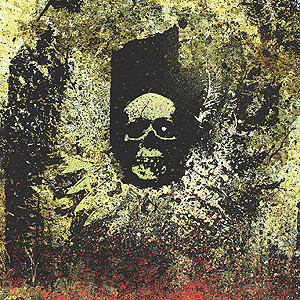 On their third (and most recent) album, the vocals of Tomas Lindberg have moved slightly further away from his traditional snarl. At times gruffer and more direct in delivery (with far less of the spoken/sung parts this time around), they still remain distinctively Lindberg and are delivered with a pleasingly high amount of clarity.
On their third (and most recent) album, the vocals of Tomas Lindberg have moved slightly further away from his traditional snarl. At times gruffer and more direct in delivery (with far less of the spoken/sung parts this time around), they still remain distinctively Lindberg and are delivered with a pleasingly high amount of clarity.
One should not understand this change as any sign that the band is dumbing down in any way, merely as a reflection of the growing refinement of the band’s style; visceral aggression tempered by the sense of strangeness and disassociation which they have always cultivated. Reduced down to a core of three members (bass duties shared between Kristian and Johan, drums performed by Ulf Eriksson), the band have not let this stifle their creativity or their ire – see the moments of phased guitar in “Running With Scissors” for a good example of seamlessly integrated experimentation and aggression.
One thing that seemed a little missing from Terra Incognito was the sense of punk-y aggression and hardcore bite of their debut, replaced as it was with a more overtly post-industrial/post-punk style. Happily (for me at least), from the first driving snare pattern of “Home To Oblivion”, which moves seamlessly into some pleasingly direct riffing, this balance has clearly been redressed. Although the shimmering tremolo effects still remain a constant to their sound, as do moments of other odd guitar effects, the songs are far more riff-driven than on the previous album. “Lifeline Lost” has a particularly interesting opening riff, incorporating melo-death melody, hardcore chug and odd harmonics in a particularly memorable manner.
“Annihilating Liberty” keeps the band’s tradition of socio-political commentary alive, lamenting the corruption and debasement of personal freedom with bitter resignation. The punk-hardcore backing vocals add another element to the mix, with the riffs at times being grittily reminiscent of some of High On Fire’s earlier work. Elements of At The Gates can be heard in moments of “A Life Transparent”, albeit even these are shot through with a punky sense of energy. The punk-hardcore backing vocals again rear their head here – never distractingly loud, they simply offer a contrasting vocal take to the primary snarl.
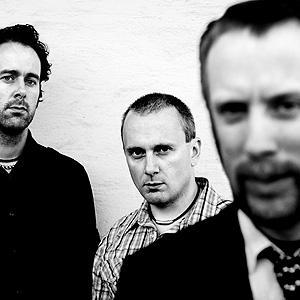 “In The Wake Of Progress” is probably the album’s most overtly melodic track, containing elements from both their previous releases as well as the primarily more hardcore leanings of this most recent album, while “Discontent” (by a distinct margin the longest song on offer here) recalls at times Cult Of Luna in its use of light and shade. The characteristic tremolo pedal is once again utilised to great effect, as are a number of other guitar effects, painting different musical tones onto the slower canvas laid down by the drums and bass.
“In The Wake Of Progress” is probably the album’s most overtly melodic track, containing elements from both their previous releases as well as the primarily more hardcore leanings of this most recent album, while “Discontent” (by a distinct margin the longest song on offer here) recalls at times Cult Of Luna in its use of light and shade. The characteristic tremolo pedal is once again utilised to great effect, as are a number of other guitar effects, painting different musical tones onto the slower canvas laid down by the drums and bass.
Concluding with the fast paced, stop-start rhythms of “21st Century Heartbreak”, the album demonstrates the drive and energy it started with, thrash-beat drumming powering the song towards a slower mid-section, with a short whiplash solo in the last minute returning the track to full-speed as it charges towards its sudden ending.
With the first album, the band may have introduced their hardcore-metal-post-punk hybrid in a more unrefined form, and with the second they may have pushed the more experimental aspects of their sound a bit further (to varying degrees of success), but on the third record the band incorporated all their influences in a much more natural manner. Although I do miss the sheer enthusiasm behind their debut record, the band has clearly found their direction and formula successfully, and I am interested to see if the post-punk/post-industrial elements make a stronger return on their next record.
Recommended For Fans Of: Vision Of Disorder, The Haunted (post-rEvolvEr), Cult Of Luna
